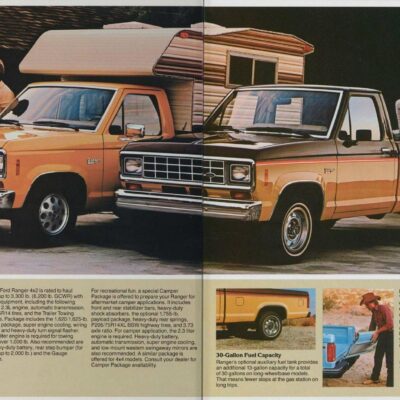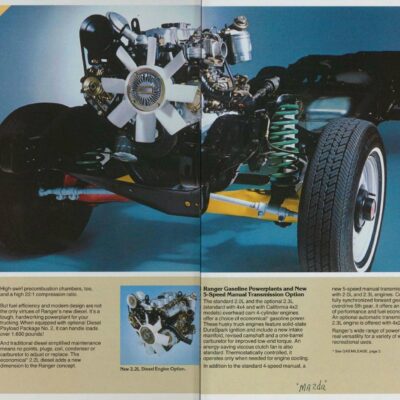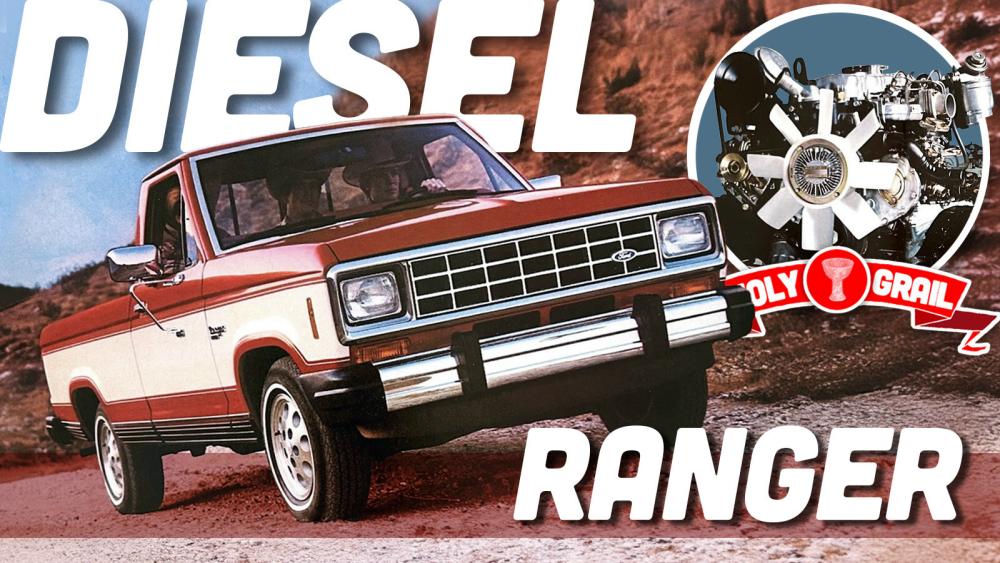
The Ford Ranger is a truck that doesn’t need an introduction. If you’re the kind of person who doesn’t need to go whole hog F-150, the little Ranger is your truck. For decades, Rangers have proven themselves as tough trucks for hard work, rough terrain, and days of play. But Americans haven’t been able to pair the legend with a diesel for a very long time. For just a couple of years, the beloved Ranger came with diesel engines, but they may not be what you think.
Saying “diesel” today can feel like uttering a swear word in front of a child. It can feel dirty. In a time when reducing emissions is in style, the compression ignition engine is escaping the small spaces under the hoods of passenger cars and sticking with large trucks, locomotives, and heavy equipment. However, in decades past, diesel wasn’t the enemy, but possibly the future. Diesel engines got fuel economy that gas engines couldn’t match, and they saved their owners chunks of change at the pump.
Here in America, diesel saw a brief, but meteoric rise in the 1970s and the 1980s. Oil crises, concerns about the environment, and tightened economic belts helped lead a push toward lowering emissions, cranking up fuel economy, and saving some money along the way. Diesel engines, then known for their ability to squeak out better fuel economy numbers than the day’s gas engines, found their way into everything. You could buy a luxury Lincoln Mark VII or the lowly Chevrolet Chevette with diesel engines. If an automaker thought it could score better fuel economy from a diesel, it experimented with the type of engine.
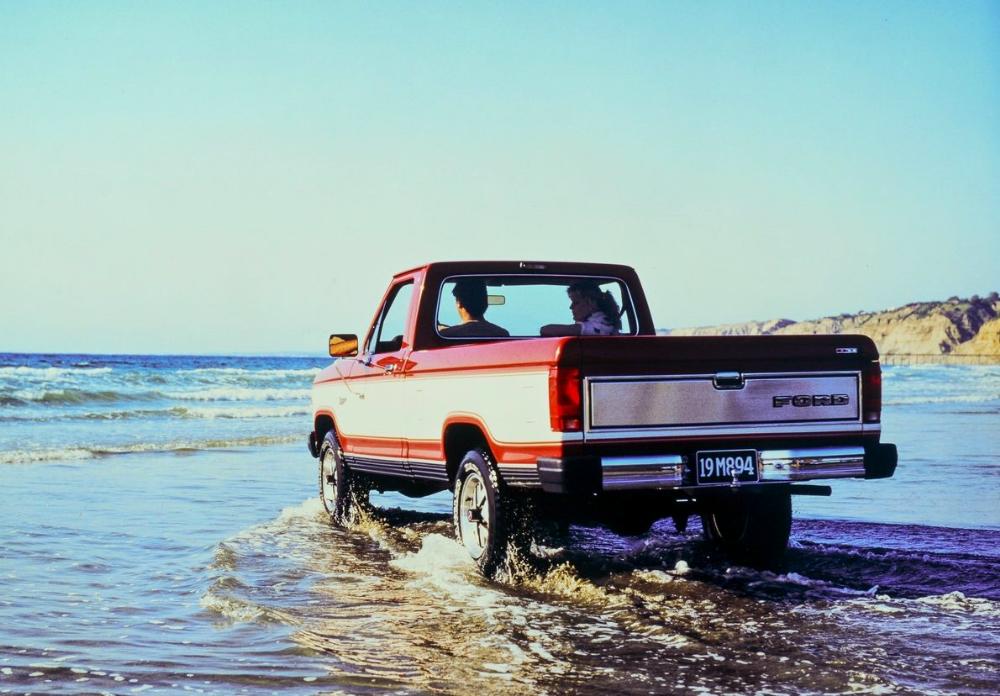
This era was a rather silly one for diesel, too. Dodge saddled its trucks with Mitsubishi diesel engines that made less power than a gasoline six-cylinder engine. Your only reason for opting for a Dodge D series pickup with a Mitsubishi diesel was to save money. That aforementioned Lincoln? Yeah, that ride was motivated by BMW diesel power and even the driver’s RV, the Vixen 21 TD, used the BMW diesel Ford was playing with.
Of course, the most infamous use of diesel power was laid down by General Motors with the unreliable Oldsmobile diesel. The ’70s and ’80s diesel craze got so weird that even Toyota was willing to sell Americans a Camry with a diesel engine. That hasn’t happened again since.
The genesis of the Ford Ranger was right there in the early 1980s, sometimes referred to as being the tail end of the so-called Malaise Era. Ford’s smaller truck legend was born in 1982, and for just a few years it would also get diesel power. Like Toyota, Ford hasn’t sold a Ranger in America with a diesel ever since.
Changing The Compact Pickup Game
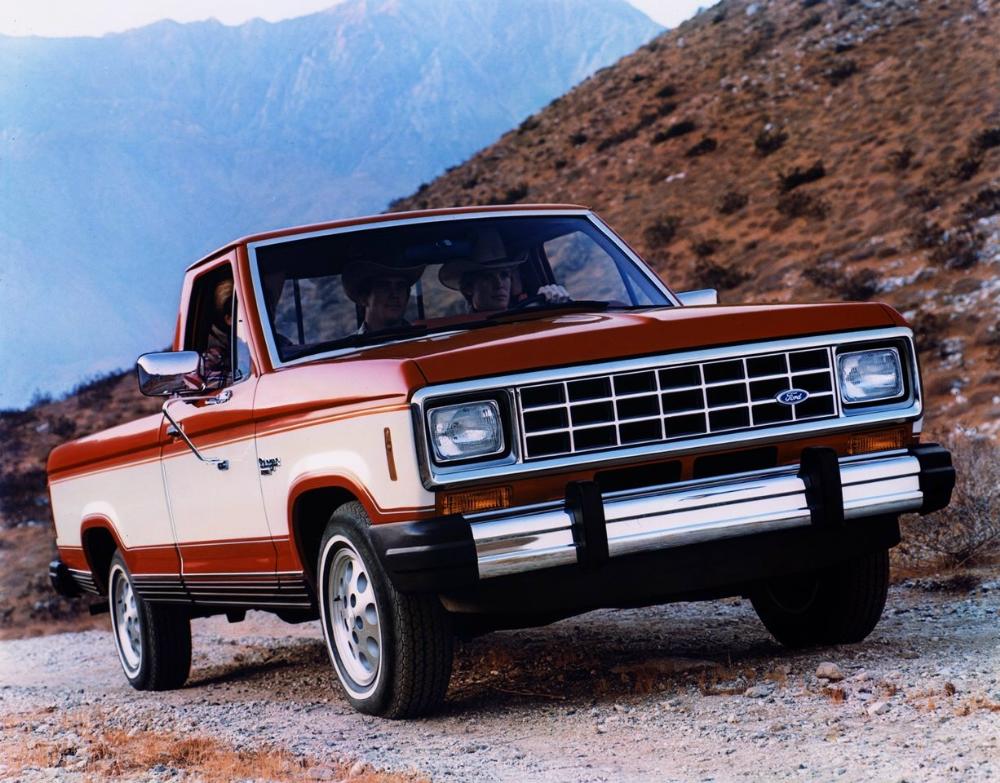
While full-size pickup trucks are the bread and butter of Detroit’s Big Three, the mid-size pickup and compact pickup truck both still gather a considerable size of the vehicle market. The Ford Maverick sold 94,058 last year all on its own. The Ranger hasn’t done a bad job either, selling 101,485 units in 2020 while in the middle of the COVID-19 pandemic. Toyota does even better. Its Tacoma laughs in the face of the Ranger with a whopping 238,805 units moved in 2020 and another 234,768 trucks sold just last year.
There was a time when the Ranger filled in Ford’s slot for a compact truck and the concept of a smaller truck that still performed hard work was novel.
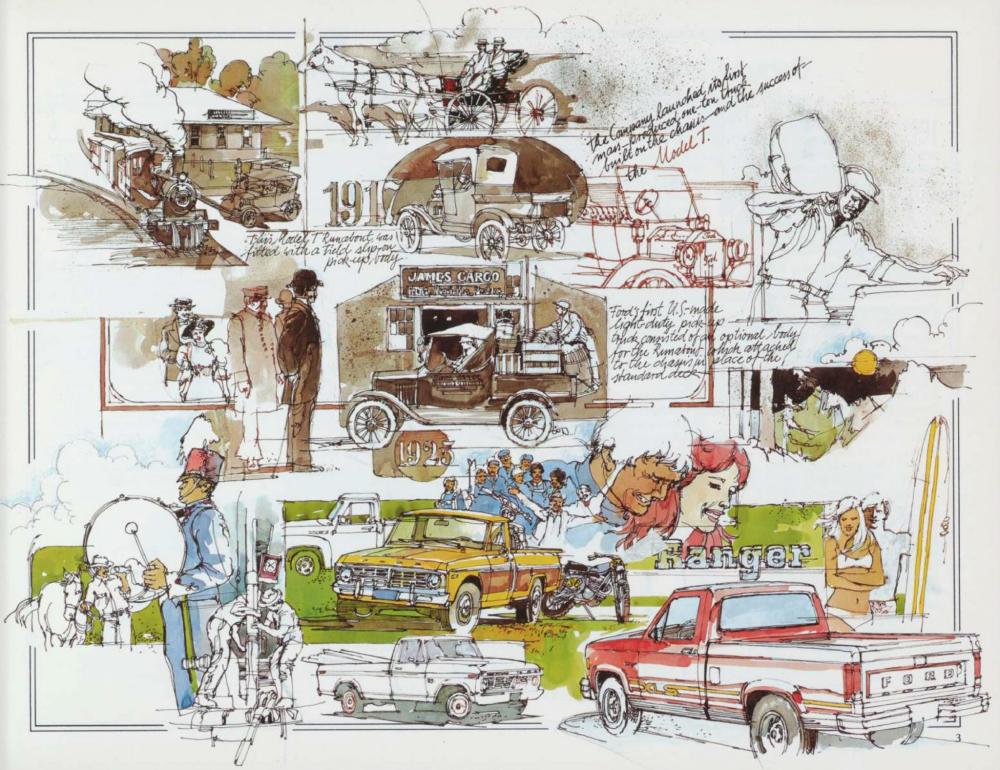
Ford traces the Ranger’s roots back to the 1917 Model T. The automaker produced a pickup truck based on the Model T that Ford pitched as a more affordable sibling to the one-ton Model TT truck. However, Ford does not say this was a compact pickup. For that, Ford says you’ll have to fast-forward to December 1956 for its launch of the Ranchero.
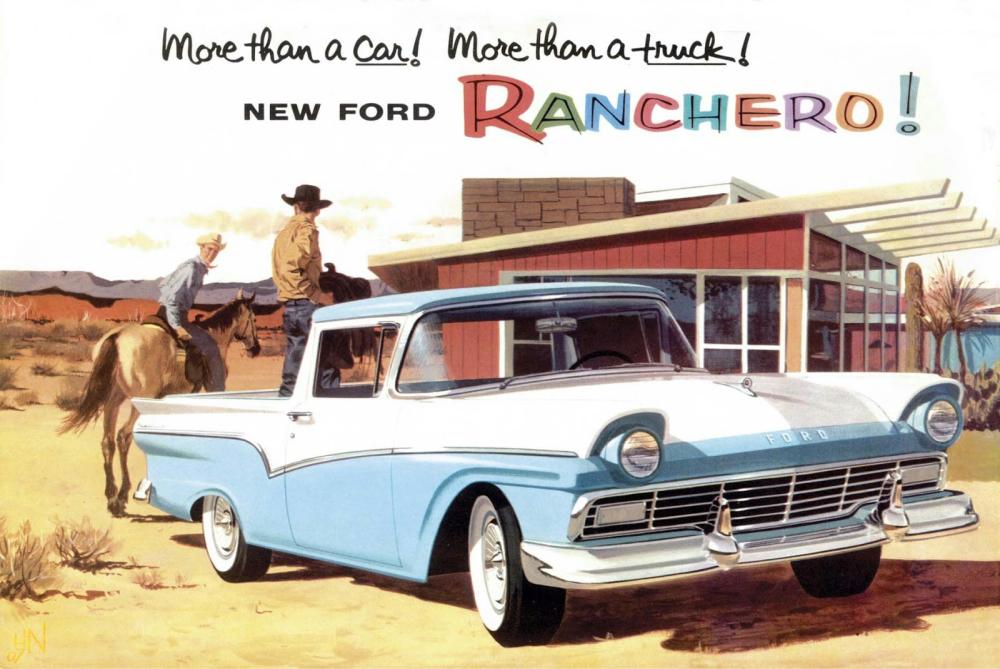
One of Ford’s selling points for the Ranchero was that it was more than a car and more than a truck. This wasn’t just marketing gobbledygook. Ford designed the Ranchero to be a stylish, desirable car while at the same time, it was a work truck with a greater payload than many trucks of the day. Ford went as far as to give the Ranchero 50 more pounds of payload than an F-Series half-ton. The automaker says that not only was the Ranchero its coupe utility of the day, but the Ranchero was its first true compact pickup truck.
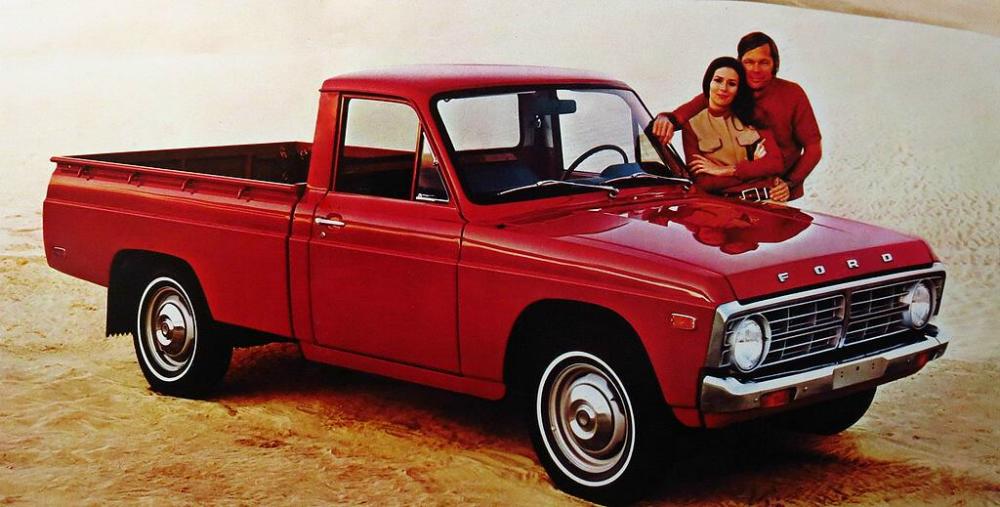
Ford’s next compact truck on the American market would not be one of its own design. In 1972, Mazda brought its compact second-generation B series pickup to our shores. Ford slapped its badges on these trucks and sold them as the Courier. As silly as that sounds, this became common practice in the 1970s. GM threw its hat into the ring with the Chevrolet LUV, which was an Isuzu Faster behind the badges. Dodge was late to the game, but still managed to slap D-50 branding onto Mitsubishi Triton trucks.
As The Development Of The Ford Ranger by Jim Clark notes, the oil crisis of 1973 taught Ford a few lessons. One of them was the fact that people still wanted to buy pickup trucks even though there were fuel shortages. Ford started looking into the future and its research concluded that the buyers of the 1980s were going to look for a smaller fuel-efficient truck that was still a real truck. Clark’s article notes that Ford fed a ton of different variables into a sophisticated computer to figure out a path forward. The resulting data convinced Ford that if it was going to have significant fuel economy gains by the mid-1980s, trucks needed to have four-cylinder engines.
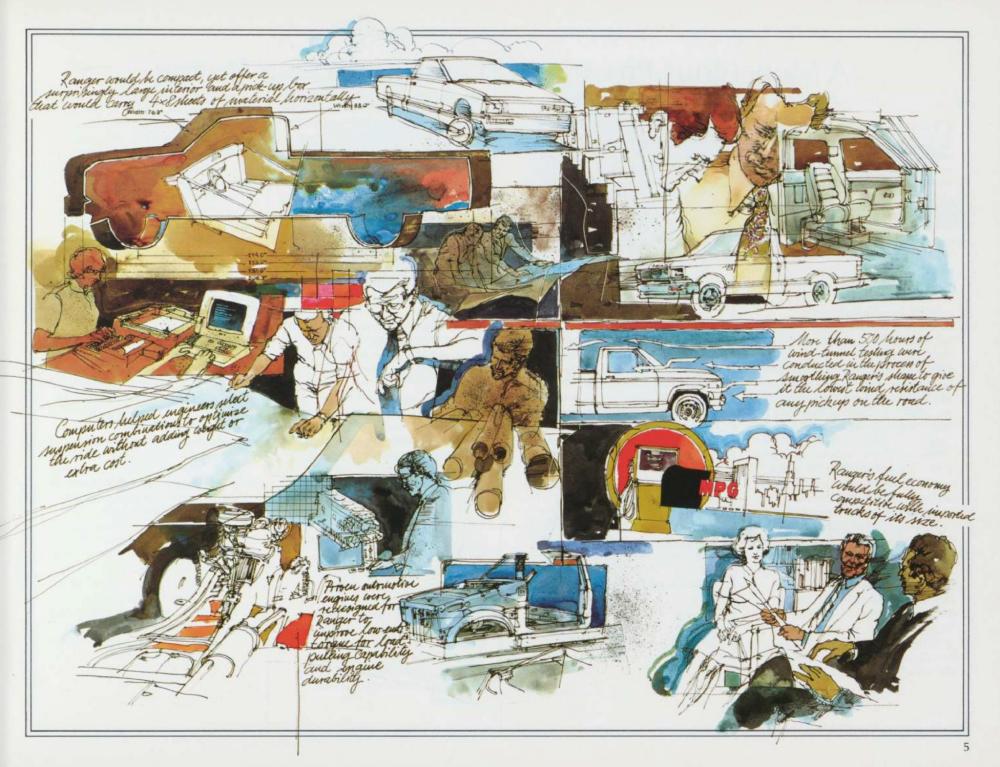
In 1976, Ford launched “Project Yuma,” the development program for a clean-sheet design that would replace the Courier. Ford would spend $600 million revamping its compact pickup and the team got the rare chance to start with a completely blank canvas. The guiding principle was that the new truck had to be compact and designed around smaller engines.
Ford set its Project Yuma high goals early on. Not only did this truck need to be small and as fuel-efficient as an import, but Ford wanted this new truck to have a focus on quality. Ford was gaming on the idea that the buyers of the 1980s weren’t going to take more of the same garbage shoveled out of auto plants in the 1970s. Further, Ford wanted this compact truck to be as tough as a full-size rig while offering the ride and drive that would make a buyer want to use it as their personal vehicle.
To achieve this, Ford’s designers cobbled up several concept models and rolled them out for then-current truck owners to criticize. Ford learned that buyers were open to small trucks, but they still had to be real trucks. That meant cabs built for six-foot-tall people, five lug wheels, and a towing package. Buyers wanted the small truck to have a three-across bench seat and to be just as hardy as a big truck.
Ford took notes from prospective customers and ironed out a plan. First, it would produce a rear-wheel-drive truck called the Ranger which would serve as the genesis of a new truck line. Then, over a couple of years, Ford would fill out that line with a four-wheel-drive, a diesel, and a variation of the truck that wore a cap over where its bed would normally be.
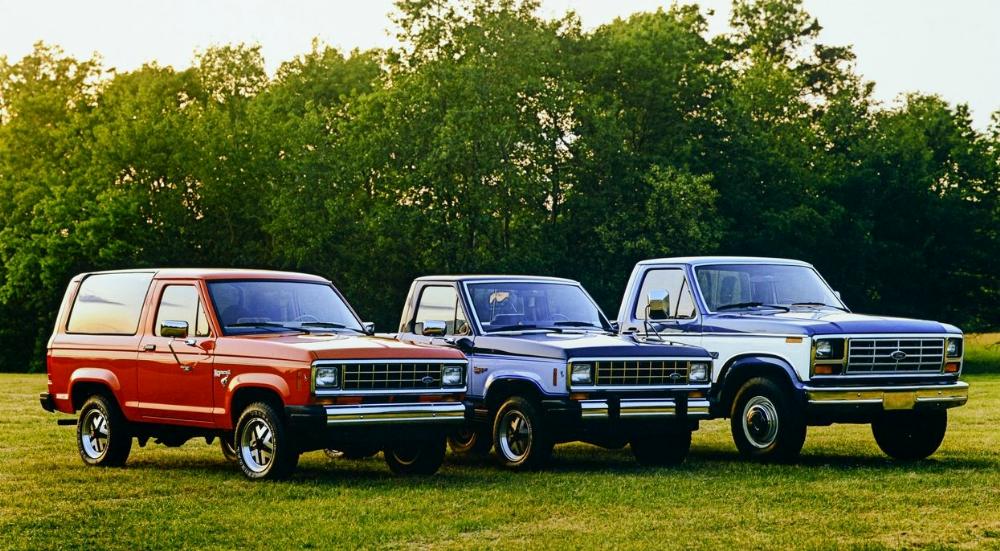
The key to the Ranger’s frugality wasn’t just being a puny truck with tiny engines, either. In 1979, Ford’s engineers hunkered down to make a fuel-sipping truck. The future Ranger was subjected to wind tunnel testing and engineers carved out a shape that helped the little truck slip through the air while still looking like a truck. The Ranger spent over 500 hours in a wind tunnel and through it, engineers worked their way through wind turbulence problems, and they even added a functional front apron. Through their work, the Ranger earned a coefficient of drag of 0.45, slippery for an ’80s truck, and the spoiler alone added a mile-per-gallon. Sure, 1 mpg isn’t much, but every bit counts when Ford was setting a 20-mpg target.
More fuel economy was achieved by putting the Ranger on an aggressive diet. Engineers used computer analysis to optimize the truck’s body, reducing weight. A calculated mix of high-strength steel, aluminum, and magnesium parts meant that engineers found a way to shave 20 percent of weight from the Ranger.
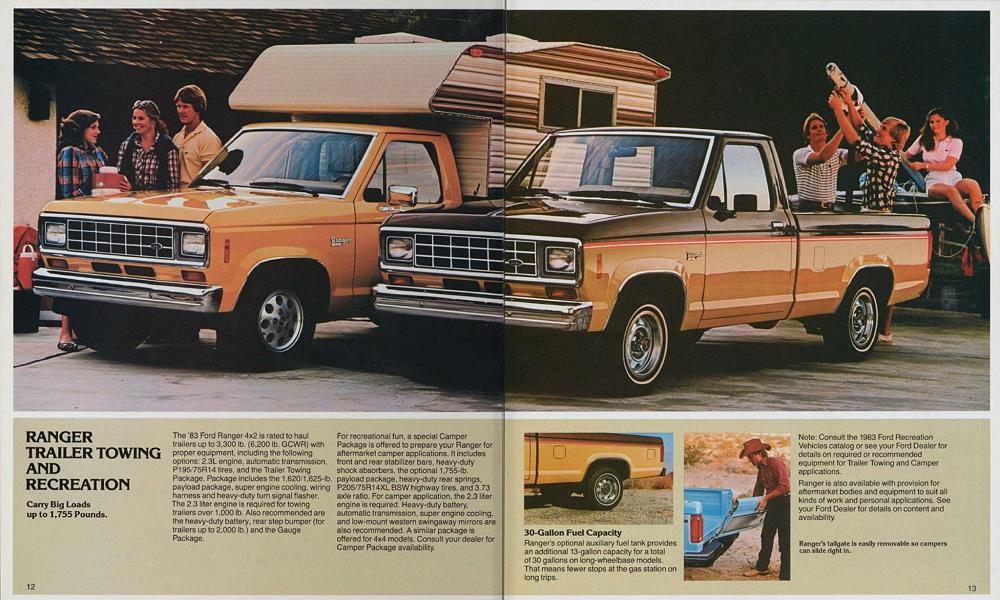
Once engineers got the truck as slippery as they could, they then turned to the Ranger’s engines. Ford’s 2.0-liter and 2.3-liter fours were modified to deliver better low-end torque and to increase their durability. A new, reduced friction valvetrain was also introduced in an effort to increase fuel economy. Ford’s engineers then subjected the engines to 700,000 miles of testing to prove they were up to the task.
Finally, once the truck was ready to save buyers at the pump, engineers turned to the “personal vehicle” aspect. The Ranger couldn’t ride like a truck, but it was something someone might want to daily. Engineers worked with a computer to find the lowest spring rates and lowest ride frequencies possible. A 310-pound front spring rate was found to be great for good road manners but also eliminated the need for stabilizer bars. Up front was a refined stamped steel twin I-beam and the leaf springs in the rear were lengthened for a smoother ride.
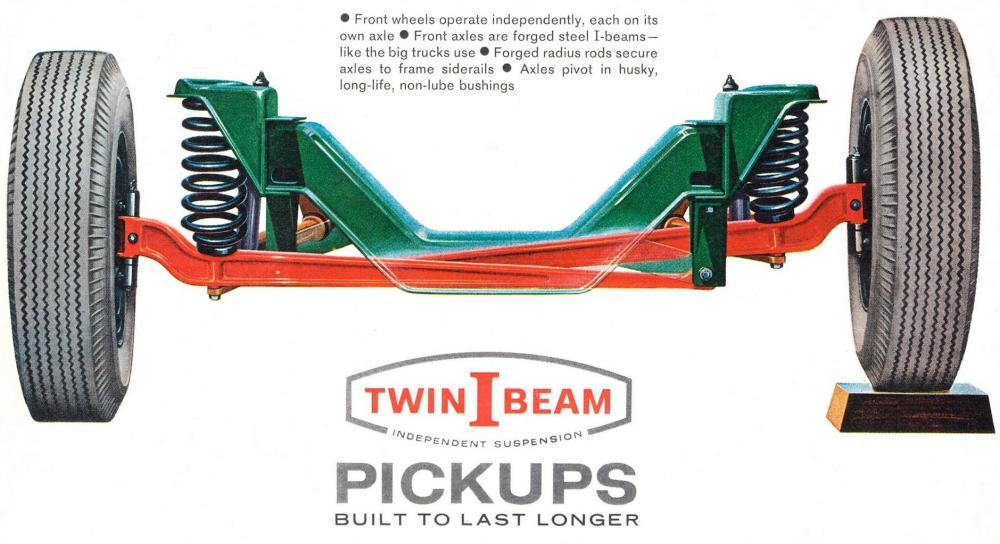
In addition, service intervals were lengthened, and handy features were introduced like a removable double-wall tailgate. A Ranger, which was 17 inches shorter (175.5 inches) than the era’s F-Series, couldn’t carry 4×8 sheetrock out of the box due to the bed’s wheel well bumps. But all it took was a pair of 2x6s to carry 4×8 material. Other touches included comfortable seating and cab noise levels on par with passenger cars.
Reportedly, Ford considered canning Project Yuma. 1979 brought on another fuel crisis and Ford’s redesign of the F-Series wasn’t bringing in the cash the automaker wanted. However, canceling the Ranger would have been a bad idea as General Motors was in the middle of developing its own compact truck. A canceled Ranger would have left GM to have all of the fun, and Ford couldn’t do that.
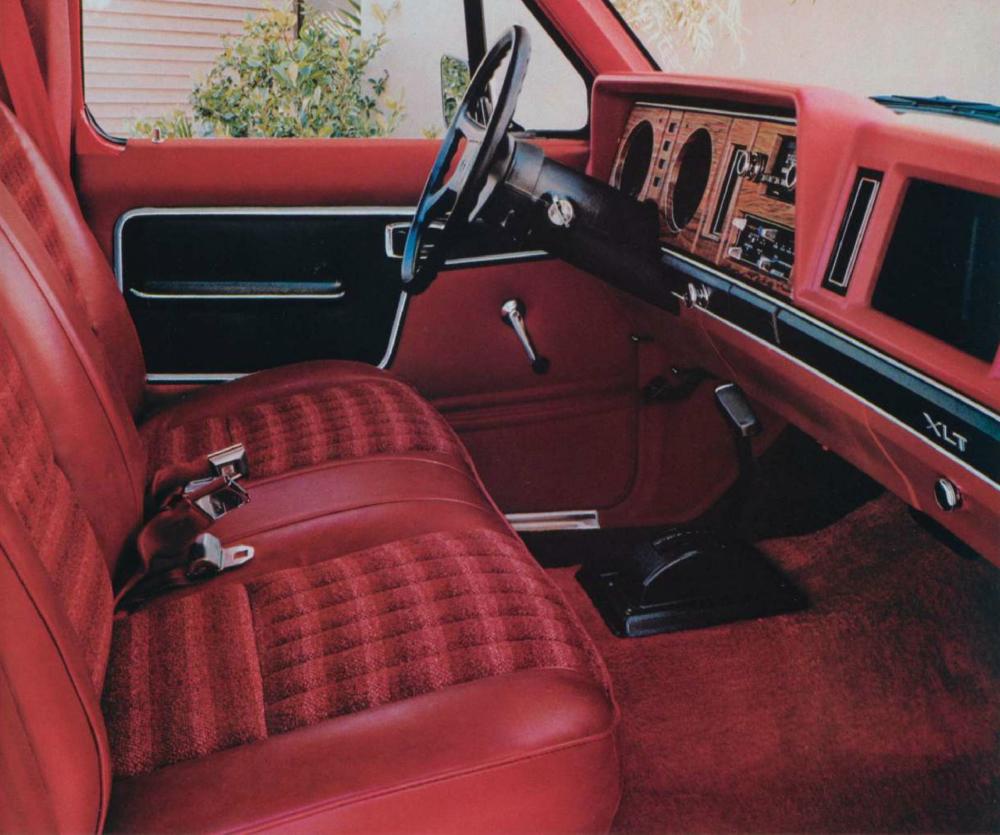
Still, General Motors beat Ford to the punch by six months, but Ford still got the Ranger on the road in early 1982. That year, GM sold twice as many Chevy S-10 and GMC S-15 pickups, but Ford still sold 76,684 Rangers between March 1982 and September of that year alone. It didn’t take long for Ford to catch back up to GM. In 1985, more than 232,000 Rangers went to new homes.
By all accounts, the first-generation Ranger was a fine truck. Yes, it was as slow as molasses, but so was the competition. What was important was that it was indeed a real, comfortable truck and when you equipped it with the 2.0-liter four and a manual transmission, you got as much as 28 mpg.
Going Diesel
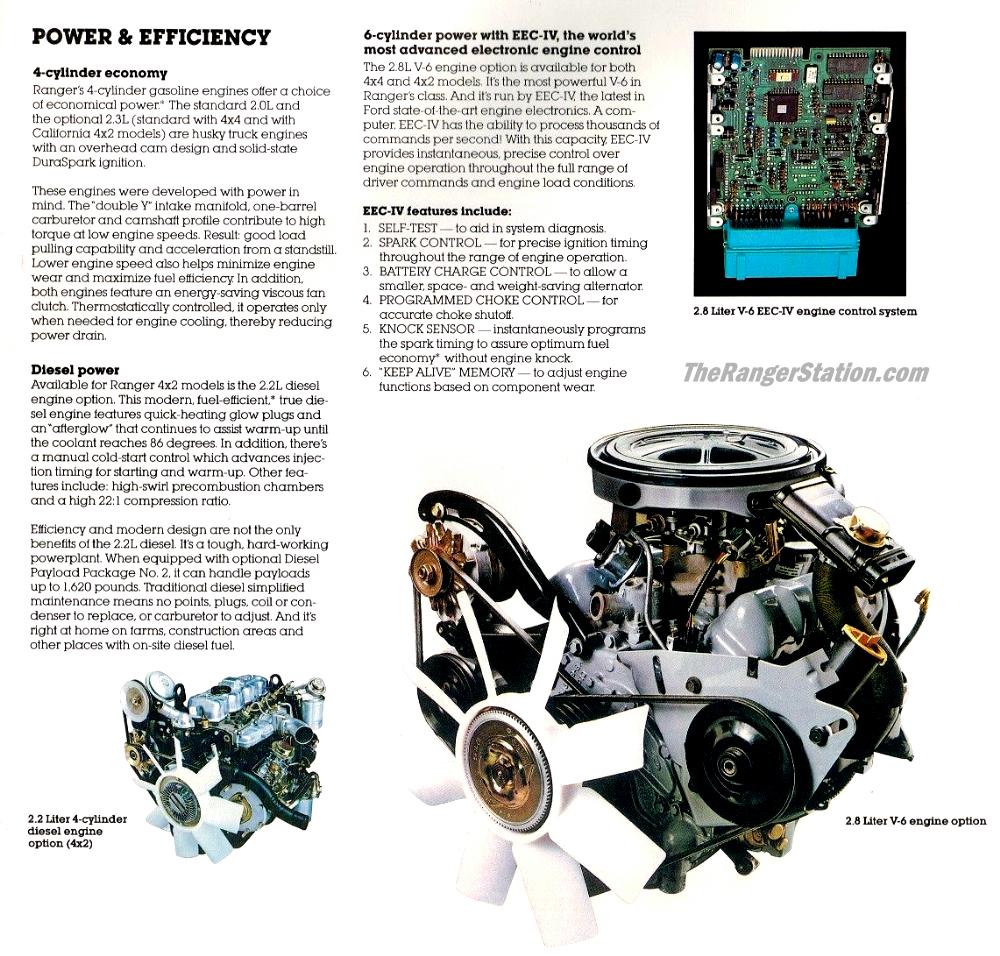
Not as well-known is the fact that Ford had one extra trick up its sleeve. When the Ranger launched in the 1983 model year, buyers had one more option to choose from.
The first diesel engine that was available to the Ranger was a 2.2-liter four made by Mazda under license from Perkins. This engine features a 22:1 compression ratio and Ford advertised it as the engine requiring the least maintenance for the highest fuel economy returns. The Perkins diesel featured glow plugs to help with cold starts. During warm-up, the plugs stayed on until a coolant temperature of 86 degrees. Further aiding cold starts was a control to advance injection timing until the engine got warm enough.
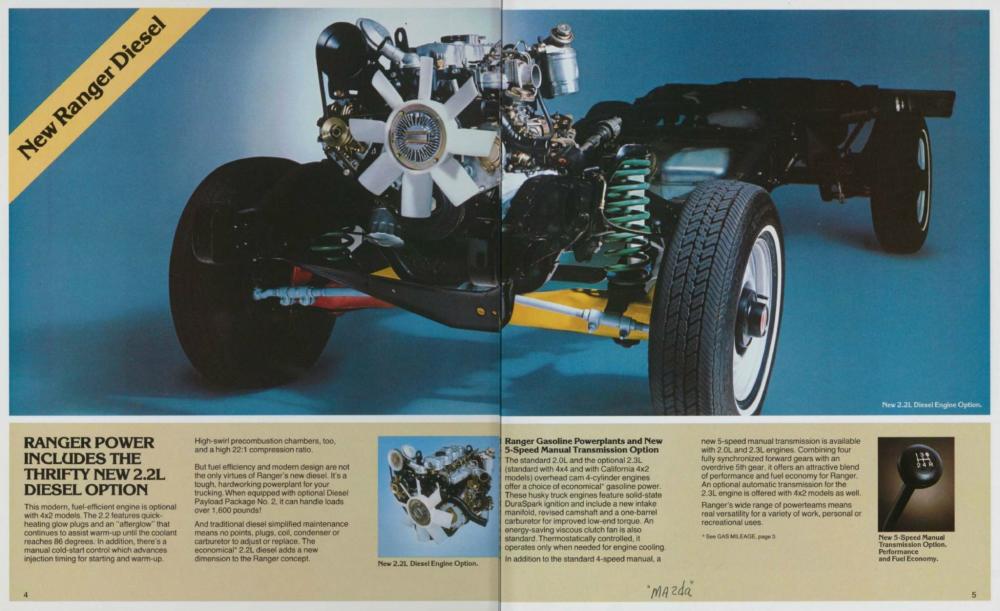
Ford was careful with the diesel’s advertising. It didn’t mention the fact that the Perkins wheezed out just 59 HP and 90 lb-ft of torque, but the fact that with the correct package checked, a diesel Ranger hauled a tad over 1,600 pounds. This wasn’t the best payload numbers the first-generation Ranger could kick out, but was a better outcome than many gas engine configurations. Ford further touted the benefits of diesel by talking up the fact that you didn’t have to worry about points, plugs, coils, condensers, or carburetors. The prospect of up to 41 mpg was also enticing. The EPA’s site, which uses corrected numbers, claims up to 28 mpg from the diesel.
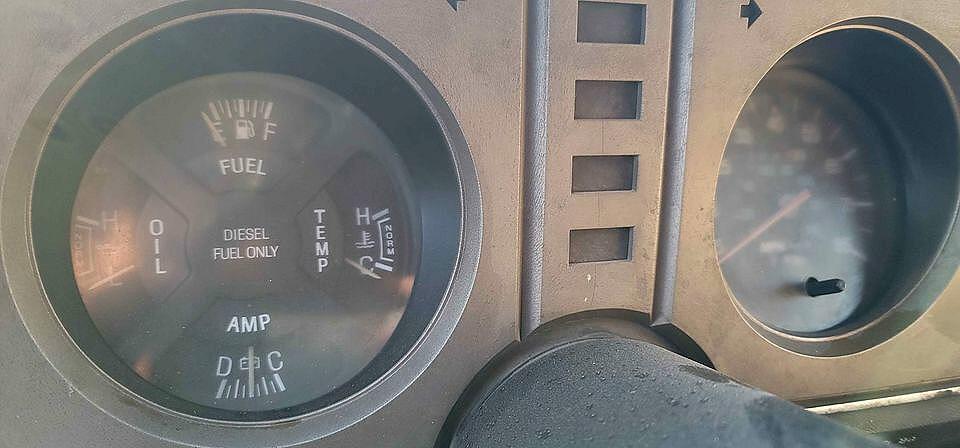
Still, a diesel Ranger was a slow one. A Ranger with the 2.0-liter four made 73 HP and gradually accelerated to 60 mph in 18.9 seconds. I found no official data for the diesel, but if the gasser was that slow, measuring a sprint to 60 mph with the diesel may have been a better fit for a calendar. The Ford Ranger diesel could have even been one of those weird instances where you’d hit a quarter mile before you hit 60 mph.
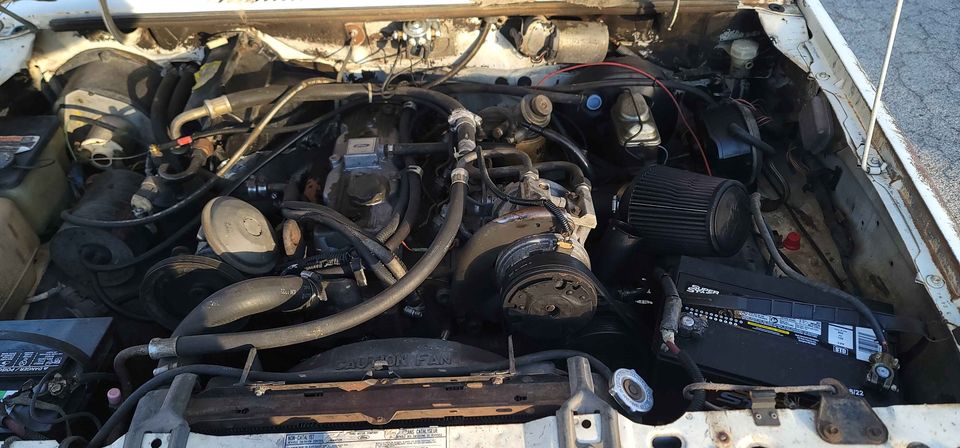
(1983 Ford Ranger Mazda-Perkins Diesel)
An improvement came in 1985 when Ford switched to the Mitsubishi 4D55-T 2.3-liter turbodiesel, which netted 86 HP and 134 lb-ft of torque. This engine reduced acceleration times down to about 13 seconds. That’s not fast, but better than before. The engine boasted electronically-controlled glow plugs, which eliminated the “wait-to-start” light that plagued the earlier Perkins diesel. These glow plugs also allowed the Mitsubishi diesel to start right away rather than waiting for the engine to warm up like with the Perkins. Other goodies added to this engine included a fuel heater, a block heater, and a tachometer. One of the complaints with the early Rangers was a lack of a tach and Ford finally fixed that. Payload remained about the same and fuel economy got about 1 mpg or so better.
You can see the problem here. Diesels in the early 1980s were not like today’s diesels. Today, we expect a diesel to pull houses while still getting great mpg. The diesel drivers of the 1980s had no such expectations. Diesels back then were for fuel economy and ease of maintenance. I could not find exact MSRP data specifically for the diesel, but a base Ford Ranger with a regular cab was $6,203, while an XLT was $9,216. That base price made a base Ranger about $400 cheaper than a Courier.
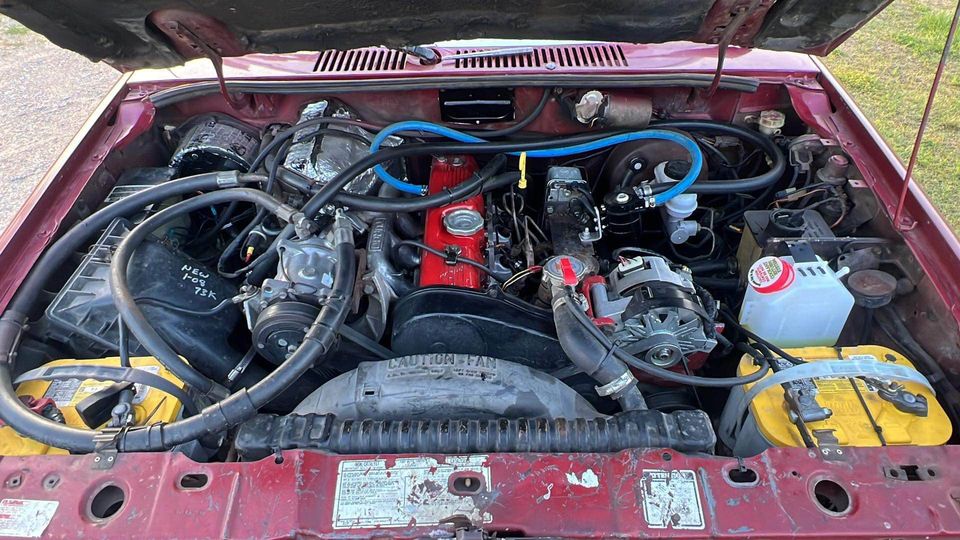
(1986 Ford Ranger Perkins Diesel)
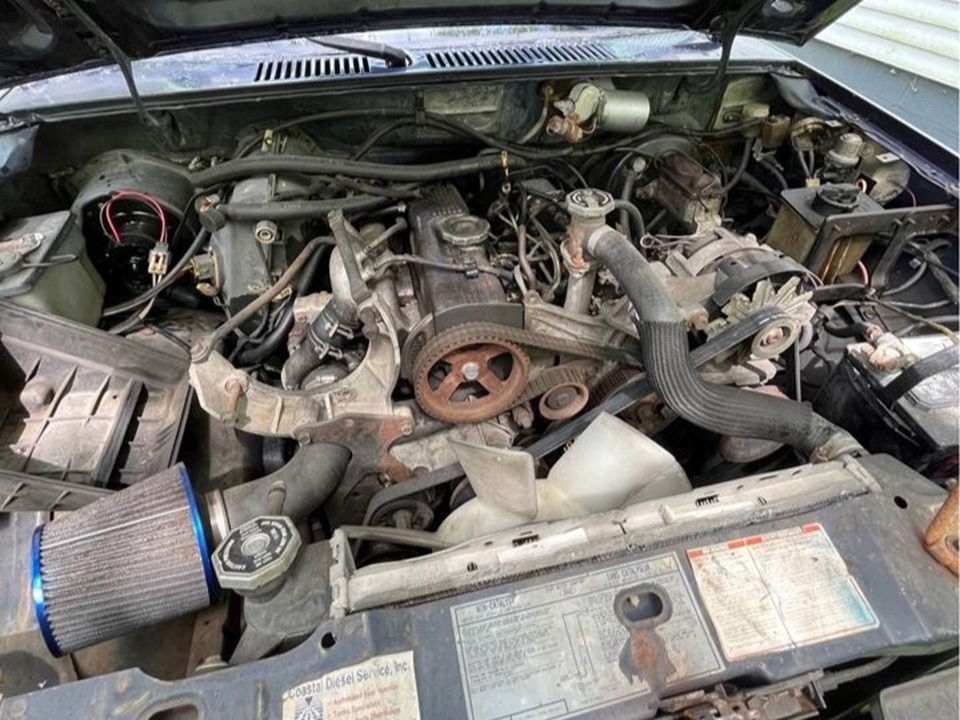
(1985 Ford Ranger Mitsubishi Diesel)
Production numbers aren’t known, but an estimate allegedly coming from AutoZone of all places claims that the take rate for diesel was about 1 percent each year. If we take that 232,000 number from 1985, that would mean 2,320 diesel Rangers were sold that year. Of course, that’s just an estimate and sadly, nobody knows production numbers for sure. What is known is that the diesel Ranger is rare, but also somewhat worthless. Again, this was an era when diesels were frugal, not powerful. You can get a nice Ranger diesel for well under $10,000.
Still, I won’t discount the fact that the Ford Ranger diesel has a strong fanbase and for them, a Ranger with a diesel engine is the ultimate rig to buy. Trucks like these are another artifact of automotive history that we probably won’t see again. Diesels were once seen as the future, now they’re a relic of a time that was. The next time you see a Ford Ranger rolling down the street, listen to the engine – if it’s clicking and clacking, it might be a diesel.
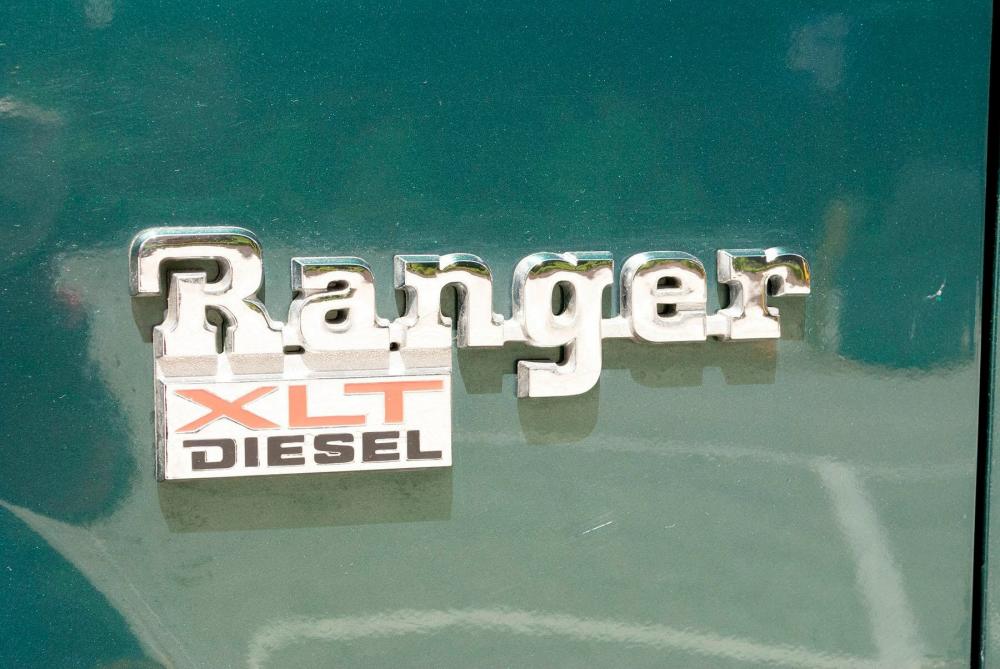
Notes:
I saw the article at theautopian.com and thought it was worth saving and sharing. I removed some images of 1989-1992 Ford Rangers from the article because they did not come with diesels and added photos of some diesel engines.
See our: 1983-1987 Ford Ranger Diesel Tech Page
Resource: theautopian.com

